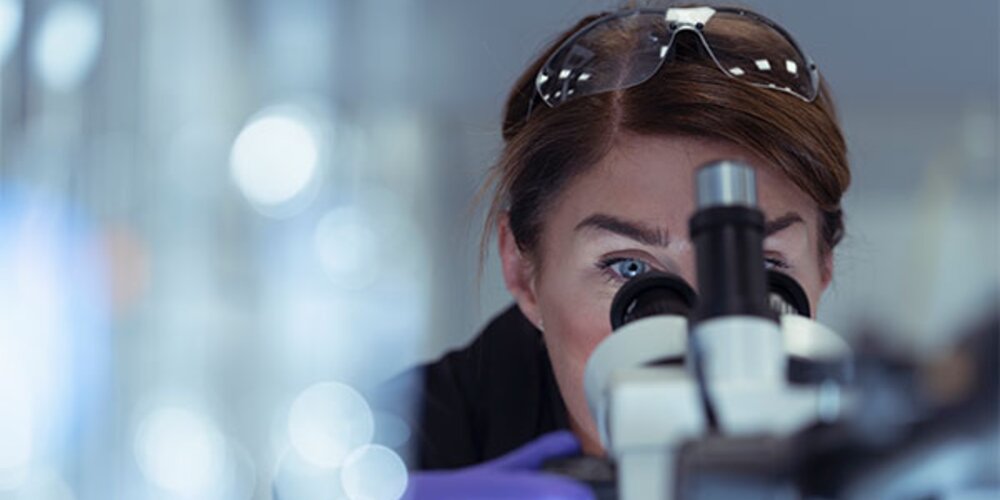Browse our services
Explore how Brookes Bell can help you
Find an expert
Meet our team, find and expert and connect
Contact us
Get in touch, we're here to help

As a leading multi-disciplinary technical and scientific consultancy, Brookes Bell has a reputation for being the 'go-to' firm for casualty investigation, forensic analysis, technical dispute resolution and expert witness work. We investigate, troubleshoot and advise on a broad range of marine and energy matters.
Matthew Calveley, Laboratory Manager and Technical Lead for Metallurgy services explains how The Lab’s services underpin our surveyor’s investigations.
The range of cases that Brookes Bell investigates is diverse, requiring a variety of different disciplines to ascertain the root cause of an incident.
Often there is requirement for the surveyor/expert to travel to site. Although it would be great to carry out some basic testing or analysis on site, it is not always practical and it’s more likely that we will document, record and identify samples which will then be sent to The Lab for more detailed and comprehensive analysis.
Indeed, in a world where travel has not been easy for the past 24 months, it has highlighted the importance of sending samples and being able to rely on independent lab tests for verification and investigation.
We’ve discussed and highlighted the many ways that our Lab can handle and examine metal items, fuel samples and paint flakes, but what else can we examine? The answer is constantly evolving as we complete more and more investigations which highlight the extreme versatility of our high-end analytical equipment.
The Lab will respond to any enquiry where we can provide value through independent and accurate advice from our examination and testing. With increasing demand coming from both within and outside the maritime industry, the new testing facility allows Brookes Bell to provide a greater range of services to support its clients in sectors such as traditional maritime, superyachts and energy.
A clear example of this versatility is through the use of our microscopy equipment, such as the Scanning Electron Microscope and our suite of high end digital optical microscopes. We procured this equipment in order to provide a cutting-edge service in forensic and metallurgy failure investigations. However, the quality of imaging and accuracy of measurement has been amazing and is making them useful for many other ad hoc investigations.
For example, we have used our microscopy equipment for bulk cargo samples. Using light microscopy, we have been able to investigate allegations of contamination by identifying other foreign particulates present – demonstrating how they look to the client and how they are distributed within the overall bulk sample. This isn’t the whole picture of a contamination claim, but it is valuable extra information where standard tests would have struggled and wouldn’t have been sufficient to examine and investigate these unique allegations.
We’ve used our microscopes in fuel investigations too, where the high resolution and excellent quality colour reproduction has been valuable in identifying the presence of foreign particulates. Using The Lab’s specialist microscopes, we were able to zoom in and identify all the particles found in a sample.
The analytical equipment in the bunker fuel lab has a variety of uses too. We’ve examined liquid samples from a bulk cargo, including acid. Our specialist scientists have also analyzed corrosion deposits to discover what caused the onset of degradation. They’ve examined fire debris for clues as to the cause, chemicals involved and information about how the fire progressed. All valuable parts of an investigation.
We’ve also conducted numerous coating and water analyses. Our equipment means that we can examine the particles present to an exceptionally high degree of accuracy determining the salinity of the environment and deposits in the water or any other aspects of environmental pollution, pinpointing the sources of the problem.
The added benefits have not just been the accuracy and value of the data obtained, but also the way in which we can use the equipment for inspection. We recently worked with Managing Scientist, Marcelo Rodrigues on a case while he was out of the country. Marcelo was able to send barnacles to the lab and he was able to dial in remotely while we carried out microscopy of the samples to determine the exact size and measurements of barnacles. By being able to determine their exact size, we could give a clear indication of when they might have adhered to the bottom of the vessel and what that indicated about the anti-fouling coating etc.
The Lab equipment has many broad uses and can be utilised in many different applications, so it’s just a matter of understanding what the client or surveyor needs, to see what we can do.
There are different types of labs available across the industry. Many have been set up to almost provide a conveyor belt analysis supporting routine testing and quality verification operations, which is great and provides a valuable service to the industry. Our Lab however, is much more focused on more complex, non-standard and unique inspections and supporting the work carried out during surveys on site, and so we always have some flexibility built in to understand non-routine requests.
This isn’t to say that our testing doesn’t follow standard methods or suitable quality controls, but we always try and bring some scientific method to what may be a unique or unusual situation.